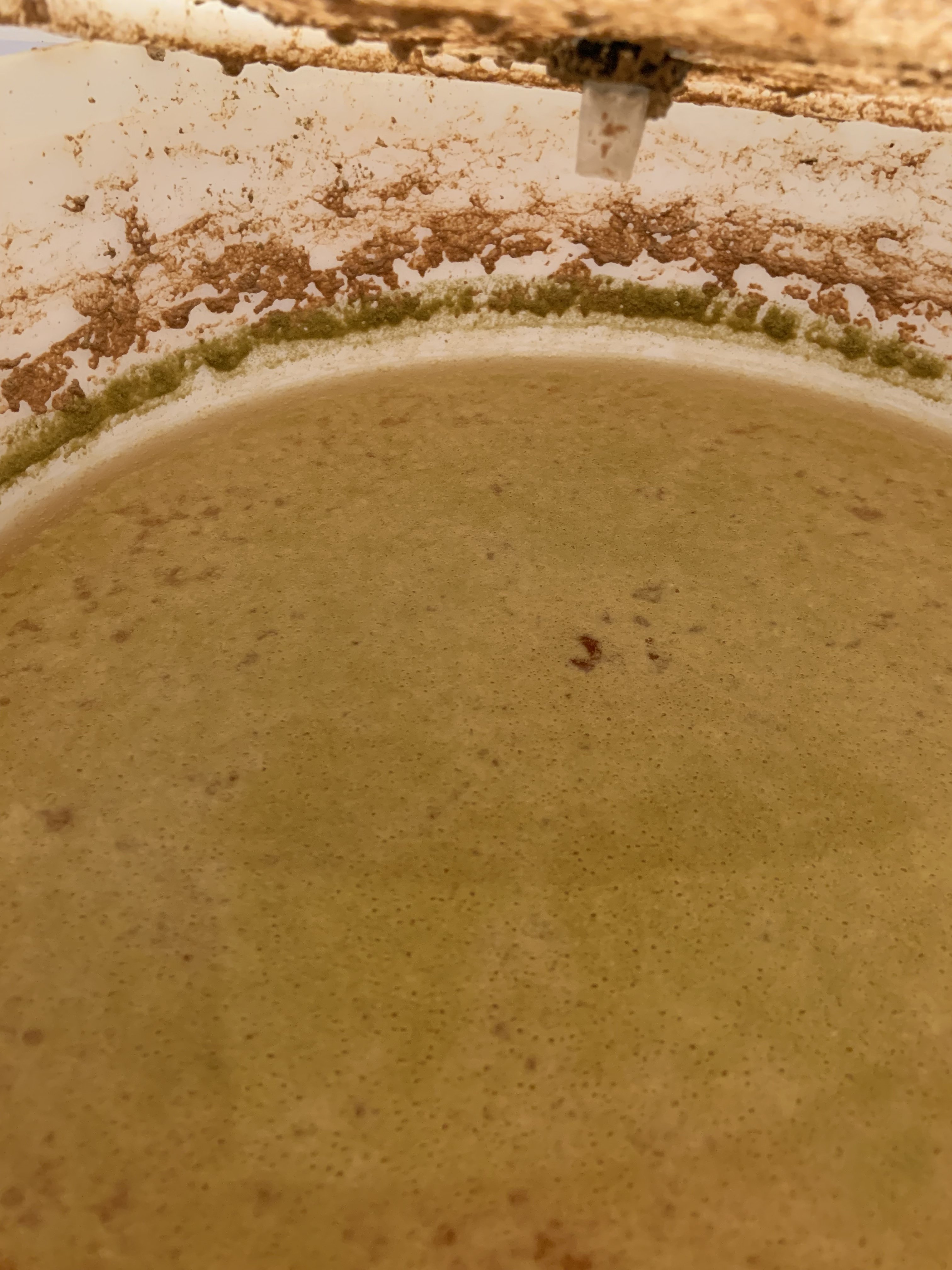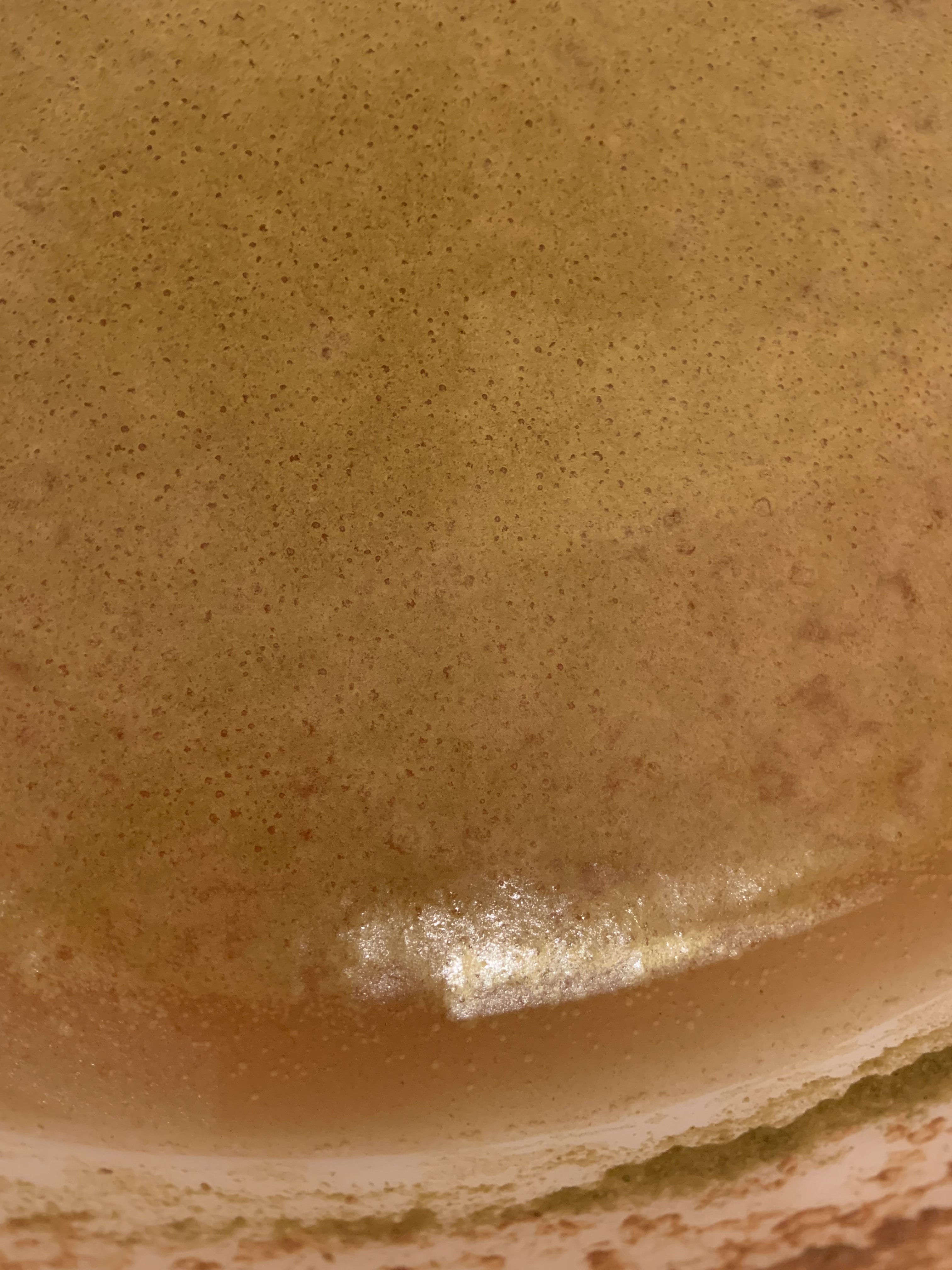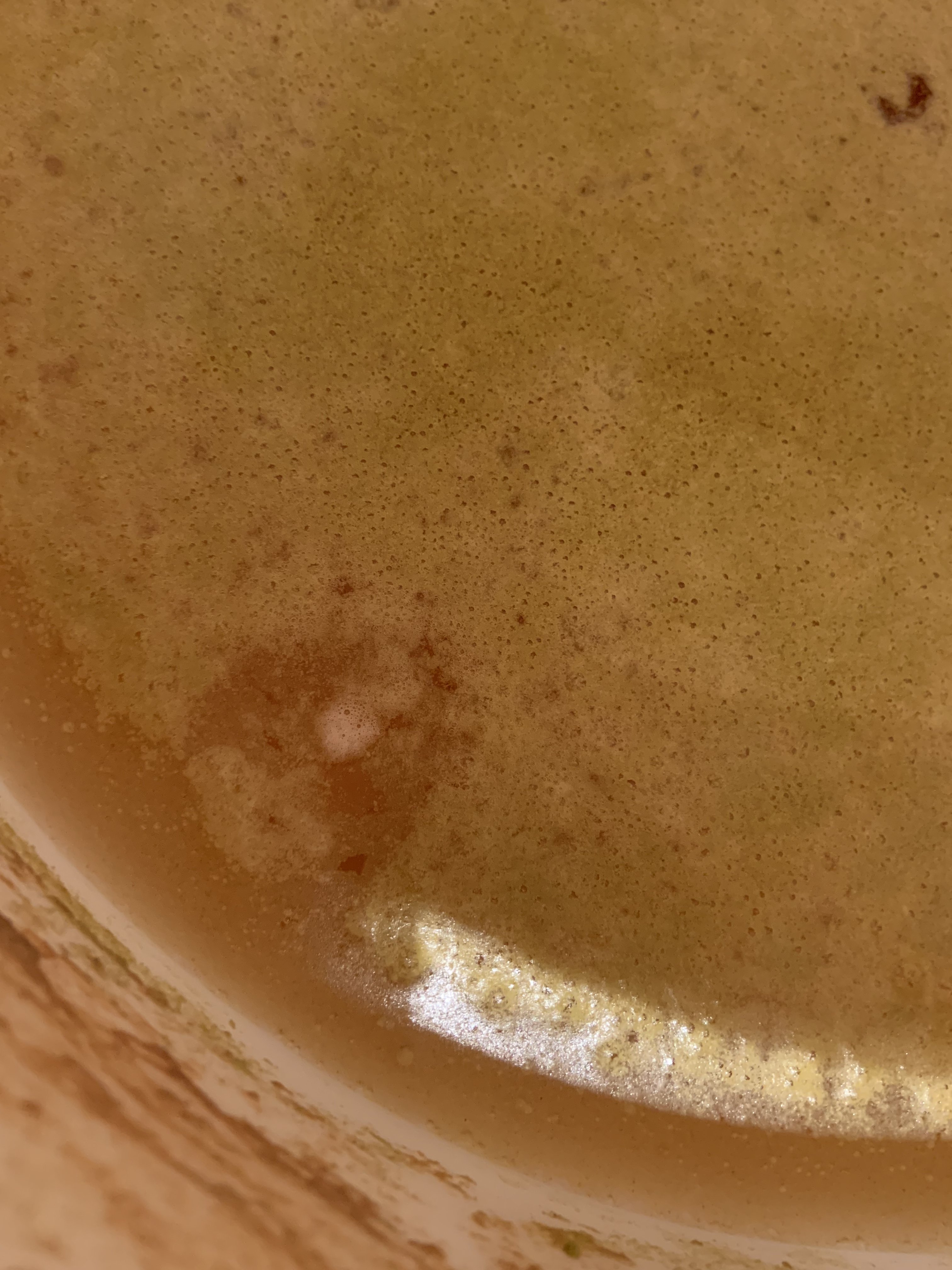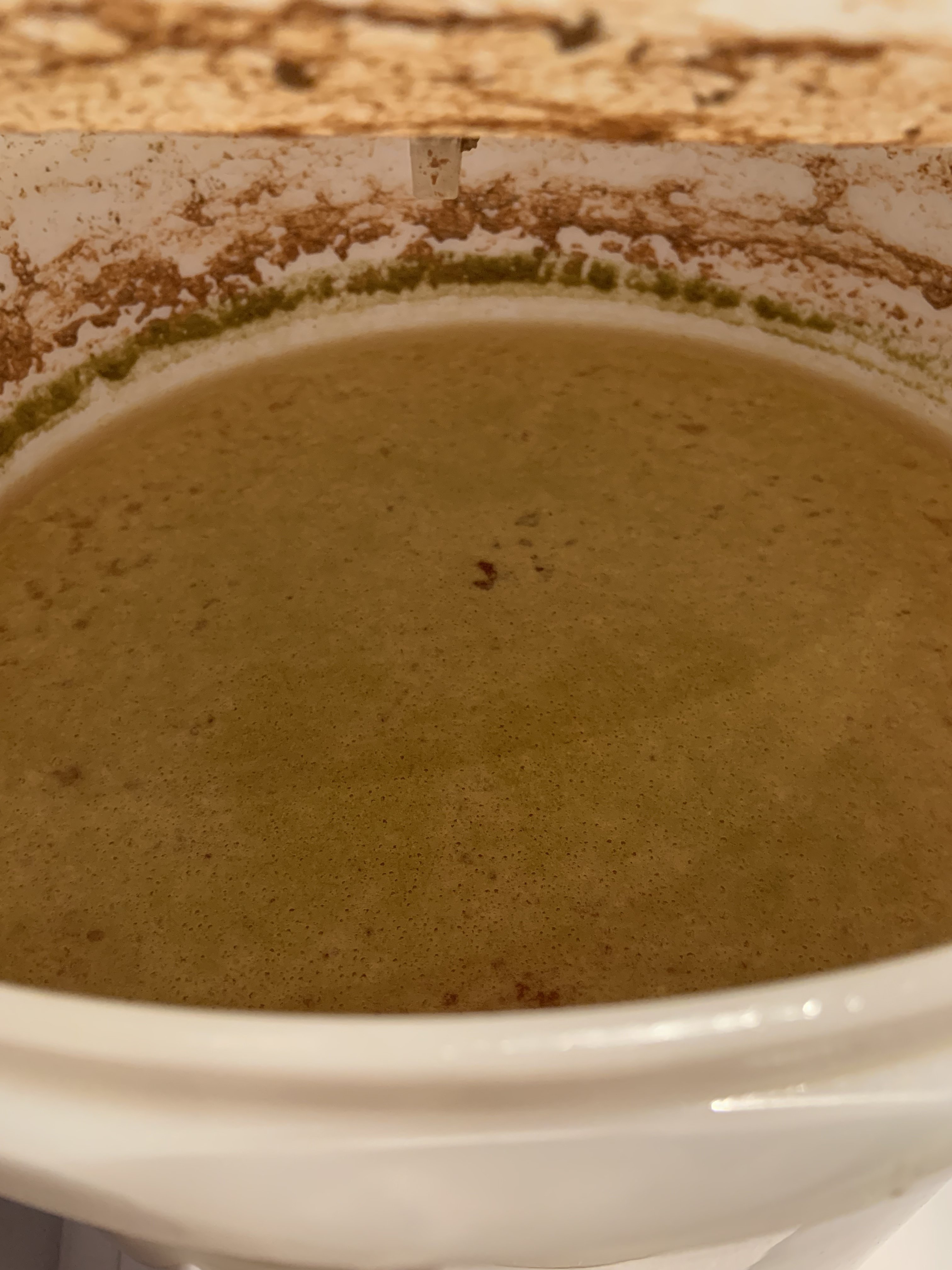Dabrew
New Member
- Joined
- Feb 14, 2022
- Messages
- 4
- Reaction score
- 1
Hi guys,
First of, I am new on this forum, looking forward to expand my knowledge about brewing and getting some light shed on some of my issues
So I brew this white IPA the other day (half of the grain bill was unmalted wheat) and I used two different dry wheat beer yeast strains for it. The OG was 1.070. The fermentation seemed to have stopped with a high final gravity of 1.024 after only a few days but after adding the second dry hopping addition in a hop cylinder (about 12 days after brew day), fermentation started again. It seemed like a new Krausen developed which pushed a lot of small particle of hops from the dry hopping to the surface (in total about 100g of hops were used for dry hopping). I took a reading yesterday after 9 days since the fermentation started again and the gravity has dropped down to 1.004. Also, there is still a very very small activity in the airlock even though the brew day is now about 24 days ago. The yeasts used were medium flocculation strains. To me, the only explanation is a contamination. For the taste, it is obviously bitter and hoppy but I cannot taste any bad flavour or sour taste. The beer is definitely drinkable but does this look like a contamination to you guys? Thanks for your time!




First of, I am new on this forum, looking forward to expand my knowledge about brewing and getting some light shed on some of my issues
So I brew this white IPA the other day (half of the grain bill was unmalted wheat) and I used two different dry wheat beer yeast strains for it. The OG was 1.070. The fermentation seemed to have stopped with a high final gravity of 1.024 after only a few days but after adding the second dry hopping addition in a hop cylinder (about 12 days after brew day), fermentation started again. It seemed like a new Krausen developed which pushed a lot of small particle of hops from the dry hopping to the surface (in total about 100g of hops were used for dry hopping). I took a reading yesterday after 9 days since the fermentation started again and the gravity has dropped down to 1.004. Also, there is still a very very small activity in the airlock even though the brew day is now about 24 days ago. The yeasts used were medium flocculation strains. To me, the only explanation is a contamination. For the taste, it is obviously bitter and hoppy but I cannot taste any bad flavour or sour taste. The beer is definitely drinkable but does this look like a contamination to you guys? Thanks for your time!




Last edited:











































![Craft A Brew - Safale S-04 Dry Yeast - Fermentis - English Ale Dry Yeast - For English and American Ales and Hard Apple Ciders - Ingredients for Home Brewing - Beer Making Supplies - [1 Pack]](https://m.media-amazon.com/images/I/41fVGNh6JfL._SL500_.jpg)












